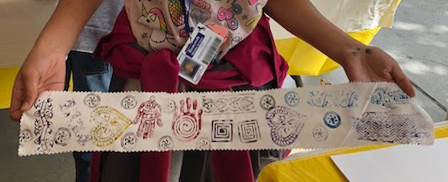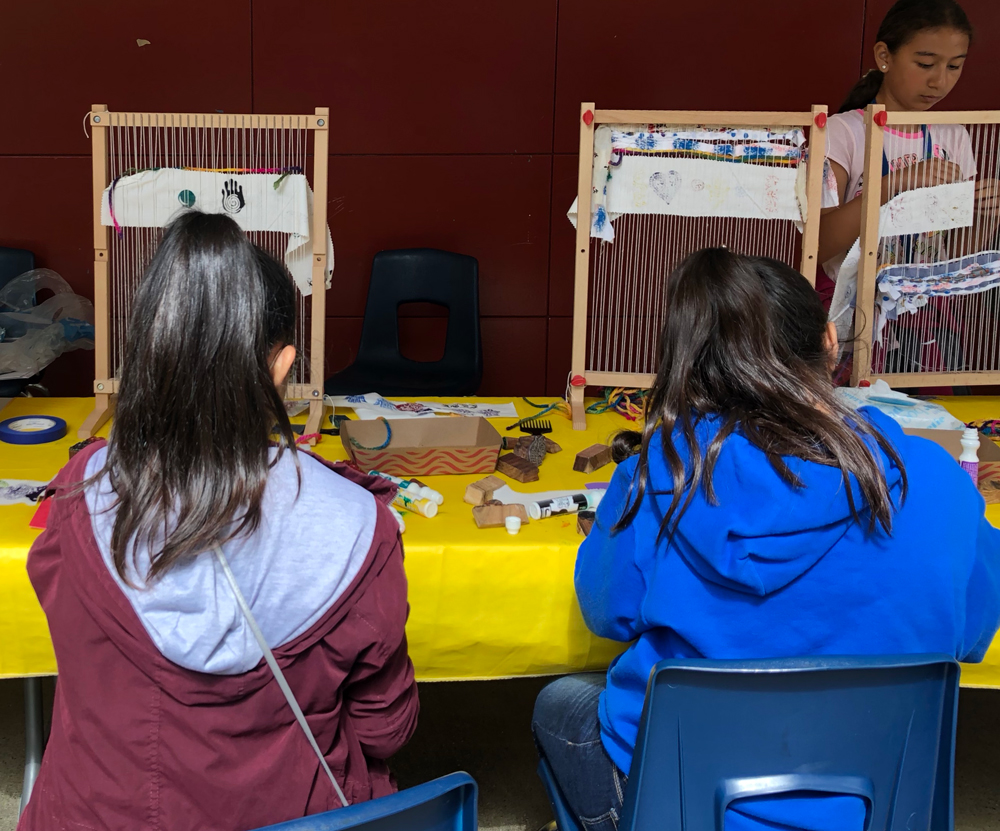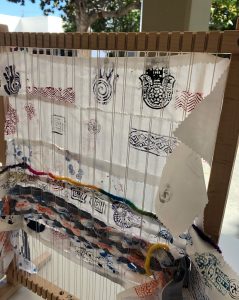
Middle school – what does it bring up in your mind? For me, and most of my friends, those days were a struggle. I felt awkward, insecure, and was bullied throughout my 7th and 8th grade years by both girls and boys, so much so that I often pretended I was sick just to sit in the peace and quiet of the nurse’s room.
Though it was really tough, there were certain realities that I didn’t have to deal with: phones were at home and still attached to cords and there was no internet. School shootings were non-existent in the early 1980’s in Wisconsin and Ohio.
Now a parent of a middle school boy, amidst the constant news of school shootings, my troubled memories mix with the new realities. Certain questions are brought to the forefront of a parent’s mind these days: How do we keep our kids safe on social media? How do we create positive school communities? How do we make sure students respect and care for one another, so we can prevent these tragedies? What can one person do?
My older son attends a large middle school of over 1,000 kids in San Leandro, a small city just outside of San Francisco. I wanted to find a way to get involved, but honestly I was a bit intimidated at first. The size of the school, the age of the students, and the memories of my own experiences all shaped my hesitance at the beginning. As an art educator, I work regularly with elementary aged kids, but not as often with this age group.
In August of 2018, as my son entered 7th grade, I made a decision to become more involved and took on the position as the PTA program chair. The first thing I was asked to coordinate was a week-long program called Start With Hello, a national initiative created by the Sandy Hook Promise Foundation to prevent future violence by minimizing social isolation in the school setting. Here was an opportunity to transform my fear, anxiety, and basic trepidation about middle school into some kind of positive action.
I am a visual artist and manage family programs at The Contemporary Jewish Museum in San Francisco. I am writing the story of this process to share how I used my background to combine arts and social initiatives to help contribute to the school community and promote self-esteem, respect for others, and a sense of community. It is my hope, through sharing, that others will steal these ideas.
A Creative Oasis With Their Sandwich and Chips
At first it was unclear what to implement—how, what, and when. Sandy Hook Promise provided a huge free curriculum, but it was a bit overwhelming. Eventually, through the work of the PTA president, teachers, and administration, pieces of programming for the week started to fall into place. We had collaborative games at lunchtime, Powerpoint presentations in classrooms, student-led kindness activities, and a dance. All of these worked extremely well, but I did feel like it needed another layer of engagement: an opportunity to create.
My vision was to see the students sit side by side, without pressure, creating something together. In terms of timing, it had to be something offered an d accessible to all the students. I knew they needed to be drawn to the activity. The kind of thing that would have drawn me in as a 7th grader, instead of having to hide in the nurse’s room.
d accessible to all the students. I knew they needed to be drawn to the activity. The kind of thing that would have drawn me in as a 7th grader, instead of having to hide in the nurse’s room.
The size of the school and the needs of this specific age group presented a real challenge. It had also been years since I had worked specifically with middle school students.
On the same week as Start with Hello, the school was providing activities related to No One Eats Alone Day, a recurring separate national initiative started in California that was now being implemented in thousands of other schools. It was created by a parent whose daughter had suffered from social isolation. Since the Sandy Hook initiative complemented the mission to overcome social isolation in the school, I thought we could offer a new creative opportunity for the students at that time. A respite—a creative oasis with their sandwich and chips.
A Curious Object
The goals for both of the initiatives stressed approaching students who were alone. But as someone who needs alone time, I wanted to respect the students’ personal space as well.
How could I encourage interaction between students… without singling them out in an uncomfortable way? I needed a “wow” factor, or an appeal to curiosity. Something the students might not have seen before. But I did not have the budget for a “wow” factor.
Challenges:
- 1,000+ students at lunchtime in the courtyard
- An activity that they could do/learn in a few minutes
- Must have collaborative element
- Appeal to this age group
- Fast and easy to set up and clean up
- Dry (we would not have access to sink)
- Inexpensive

Textile Lab as it was staged at The CJM. All photos courtesy of Andrea Guskin.
Meanwhile, at The Contemporary Jewish Museum in San Francisco (The CJM)…
The CJM had just opened an exhibition called Veiled Meanings: Fashioning Jewish Dress, from the Collection of The Israel Museum, Jerusalem which featured clothing from Jewish communities of 22 countries. My colleagues and I created a Textile Lab in conjunction with the exhibition; visitors could weave on large looms, play with draping and dressing, and join in our collaborative embroidery table. It also featured a listening station with interviews of community members from the regions represented in the exhibition, a community-driven photo montage, and pop-up programs with textile artists, musicians, and community members from Middle Eastern and North African heritage. https://www.thecjm.org/exhibitions/107
Over 2,000 public and private school students toured the exhibition, participating in loom workshops: tearing their own fabric, stamping patterns using hand carved wooden blocks, and weaving their pieces into small looms. Students from Los Angeles to Idaho, from San Jose to Sonoma, participated in the weaving. Each class that attended these workshops built upon the work of another, the project literally weaving communities together.

Weaving from The CJM’s School Program
Here was an opportunity for The CJM to make this project more accessible to a wider audience in the San Francisco Bay Area: the majority of the kids at Bancroft Middle School in San Leandro would not be able to attend The CJM, but I could bring the program to them. While the on and offsite programming of The CJM has long served elementary schools, teens, and families with young children, middle school students have been a greater challenge to reach through our programs. This was a perfect occasion to expand The CJM’s outreach to Bancroft Middle School in San Leandro, a wonderfully diverse community of students. It also made me think about how other museums might be in similar situations, possessing materials purchased for specific exhibitions that could be repurposed towards off-site partnerships.
Time Flies while Lunching with Looms

Student at the table loom.
When I arrived at the school during lunchtime with nine looms, a heap of fabric, and a wonderful fellow parent to help, I was pleasantly surprised at the fun atmosphere the school had created using the resources that they had. I didn’t realize there would be a DJ and other activities like Poetry in Motion. It felt festive, but also loud and chaotic, as you might imagine.
The looms from The CJM were an unusual and intriguing object for the students, and it had the effect I was hoping for–the students were immediately curious enough to come over to the tables. They were each given a white strip of cotton fabric, wooden and rubber stamps, and ink pads to make their marks on the fabric. After they completed their design, they were invited to come around to the back of the table to weave. We had the looms standing at the back of each table, and we taught them individually how to weave their fabric into the loom.

The protective Hamsa symbol, which was used as a rubber stamp in this project.
I brought hand carved wooden stamps with Middle Eastern and Indian motifs that connected with the textiles on exhibition at The CJM–pictures of which were displayed on the tables. The Hamsa, a symbol of protection found across the Middle East and North Africa, was one of the prominent designs on the stamps and in the exhibition. Also called the Hand of Miriam or the Hand of Fatima, it is particularly common in Jewish and Muslim communities.
The looms and stamping were a huge hit. We were busy the entire lunch break, with a range of students from 6th-8th, and numerous teachers stopped by to see the project. I was struck by how long the kids stayed with the activity, most for as long as their lunchtime allowed, designing their fabric and then learning how to weave it into the loom.

Student considering what to put on fabric strip before weaving with it.
One of the boys was fascinated with how he could layer the colors on the fabric, turning the ink pads upside down to make his marks–not interested in the stamps at all. It was so good to see the kind of creative focus he was able to achieve, even within the loud and chaotic atmosphere of lunchtime. It reminded me of my own moments in the art studio, when I lose track of time and feel simultaneously engaged and peaceful. I have often heard this creative state of mind described as flow. In his book Flow: The Psychology of Optimal Experience, psychologist Mihály Csíkszentmihályi writes about flow as “being completely involved in an activity for its own sake. The ego falls away. Time flies. Every action, movement, and thought follows inevitably from the previous one, like playing jazz.”
In addition to the Loom Project, we added a large collaborative piece of fabric and fabric markers with prompts to encourage students to write and draw positive messages to their classmates. The prompts were developed in collaboration with my twelve year old son, who is a student at the school: What makes a good friend? and Write an anonymous compliment to someone you know.
There were of course some students that were hesitant to come join the art-making – but by providing the collaborative drawing table we thankfully created the right entry point for these students. As they stood waiting on the lunch line, they were able to participate without a big commitment.
Supplies for Replicating This Project:
Inkpads
Wooden Stamps
Student Loom
Make Your Own Loom (wood)
Make Your Own Loom (cardboard)
Fabric Scraps
My Reflections
Looking at the woven pieces now, covered with the symbol of the protective Hamsa, I am so pleased at how the art process itself connected with the original intent of Start with Hello: an initiative to protect the school community through connecting students with each other.
 As it turned out, hundreds of students participated in an art experience for very little additional cost to any of the organizations involved, and with no cost to the school, thanks to The CJM’s willingness to offer their already-purchased materials. We were able to connect to two national initiatives, extend the reach of a museum, and offer a unique community building experience to the students.
As it turned out, hundreds of students participated in an art experience for very little additional cost to any of the organizations involved, and with no cost to the school, thanks to The CJM’s willingness to offer their already-purchased materials. We were able to connect to two national initiatives, extend the reach of a museum, and offer a unique community building experience to the students.
This experience cemented in me the realization that even small moments of creative access/opportunities can help to encourage connections between people and organizations. These connections are the framework by which a respectful community exists, and no movement towards this end, even just an hour at lunchtime, is too small or insignificant.
–– Andrea Guskin